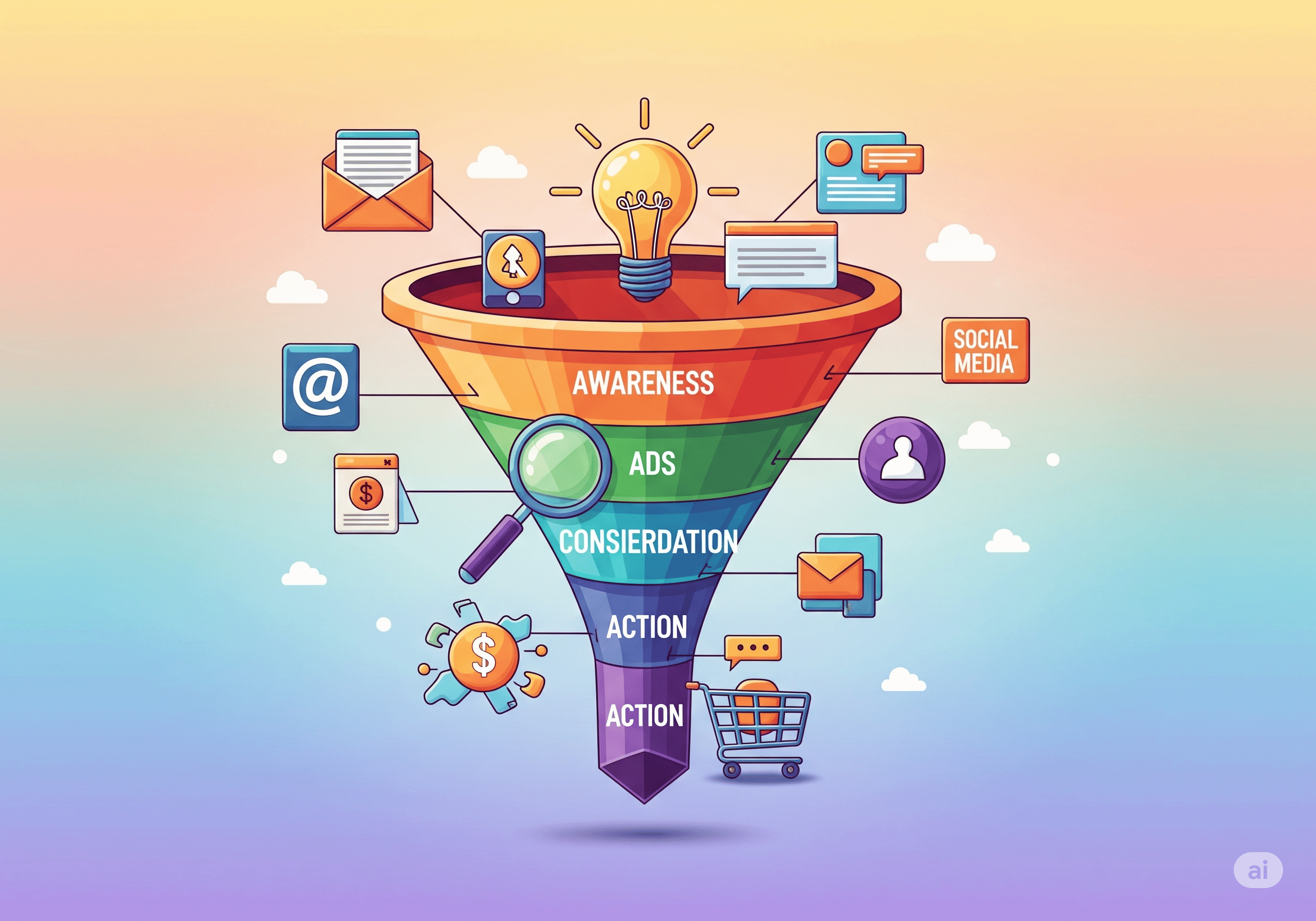Address
E-Learning
Worldwilde
Address
E-Learning
Worldwilde

Learn the step-by-step process for Building a Marketing Funnel that converts!
Are your marketing efforts feeling like a leaky bucket? You’re pouring in leads, but they’re not consistently turning into customers? The secret isn’t more traffic; it’s a strategically designed marketing funnel. Without a clear path, even the most interested prospects can get lost, frustrated, and wander away. Knowing how to effectively guide potential customers from mere awareness to becoming loyal buyers is the cornerstone of sustainable business growth.
This comprehensive guide will break down the essential steps to mastering Building a Marketing Funnel that actually works for your business. We’ll move beyond theory and dive into practical, actionable insights that will help you transform casual browsers into passionate advocates. Get ready to create a streamlined, high-converting journey for your audience, ensuring every marketing dollar you spend works harder for you.
Imagine a physical funnel: wide at the top, narrow at the bottom. A marketing funnel works much the same way. It’s a strategic framework that outlines the journey your potential customers take from first discovering your business to making a purchase and becoming a loyal advocate.
Each stage requires different types of content and engagement to effectively guide prospects forward. Without this structured approach, your marketing can feel chaotic, leading to missed opportunities and wasted resources. Effective building a marketing funnel ensures you’re delivering the right message, to the right person, at the right time.
| Funnel Stage | Goal | Common Question Your Prospect Asks |
| Awareness | Get discovered, introduce your solution | “What is this problem I’m having?” or “What’s out there?” |
| Interest | Engage, educate, build connection | “Can this solve my problem?” or “How does this work?” |
| Consideration | Prove value, differentiate from competitors | “Is this the best solution for me?” or “Why them?” |
| Decision | Convert into a customer | “How do I get this?” or “What’s the next step?” |
| Post-Purchase | Keep ’em happy and buying more (or telling friends!) | “Did I make the right choice?” (Hopefully, YES!) |
This is the top of your funnel, where prospects first become aware of their problem and, subsequently, your business as a potential solution. They’re typically searching for information, not ready to buy. Your goal here is to answer their basic questions and introduce your brand.
Once a prospect is aware, they move into the interest stage. They’re no longer just casually Browse; they’re actively engaged, seeking more detailed information, and evaluating potential solutions. Here, you deepen their understanding and build a connection.
At this stage, prospects are active buyers. They’re comparing your product or service against competitors, looking for reasons to choose you. Your content needs to address their specific needs and demonstrate why you’re the superior choice.
This is the narrowest part of the funnel, where qualified prospects are ready to make a purchase. Your job is to make it as easy and enticing as possible for them to take the final step.
To effectively build and manage your marketing funnel, you’ll need the right digital marketing tools. Here are a few categories and examples:
The funnel doesn’t end at the purchase! True success in building a marketing funnel extends to customer retention and advocacy. Continue to provide value, offer support, and encourage repeat purchases and referrals. Loyal customers are your most powerful marketing asset.
Building a Marketing Funnel is not a one-time setup; it’s an ongoing process of optimization and refinement. By understanding each stage, creating purpose-driven content, leveraging the right tools, and constantly measuring your results, you can create a powerful system that consistently converts leads into loyal customers. Stop leaving money on the table and start building a funnel that truly works for your business.
What stage of the marketing funnel do you find most challenging to optimize? Share your thoughts and questions in the comments below!
💡 Want a ready-to-launch funnel with tracking, nurturing, and email automation all done for you?
👉 Book a strategy call now or grab our watch our funnel here
📩 Want to stay updated?
Join our free community and get notified when new tutorials, strategies, and resources drop.